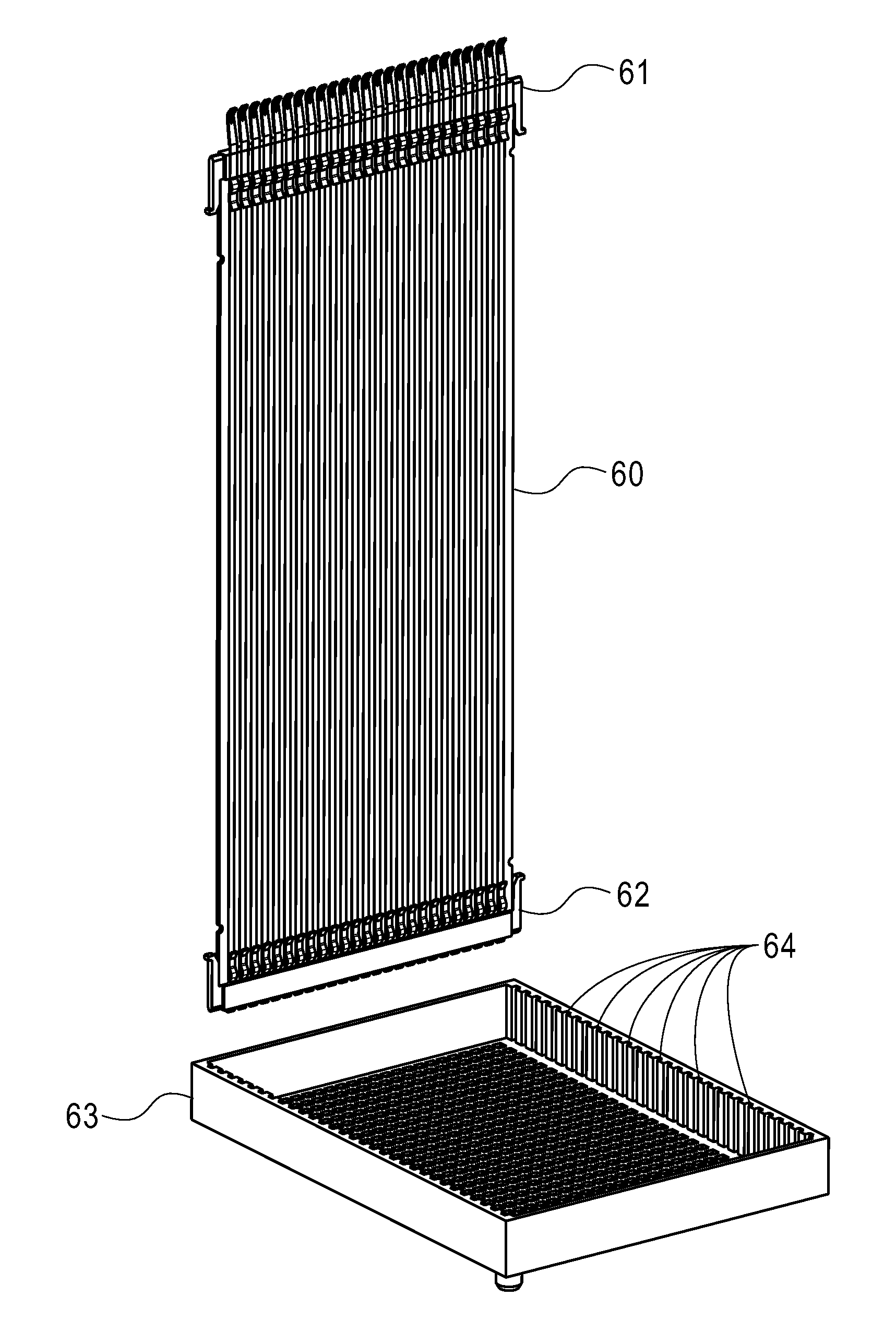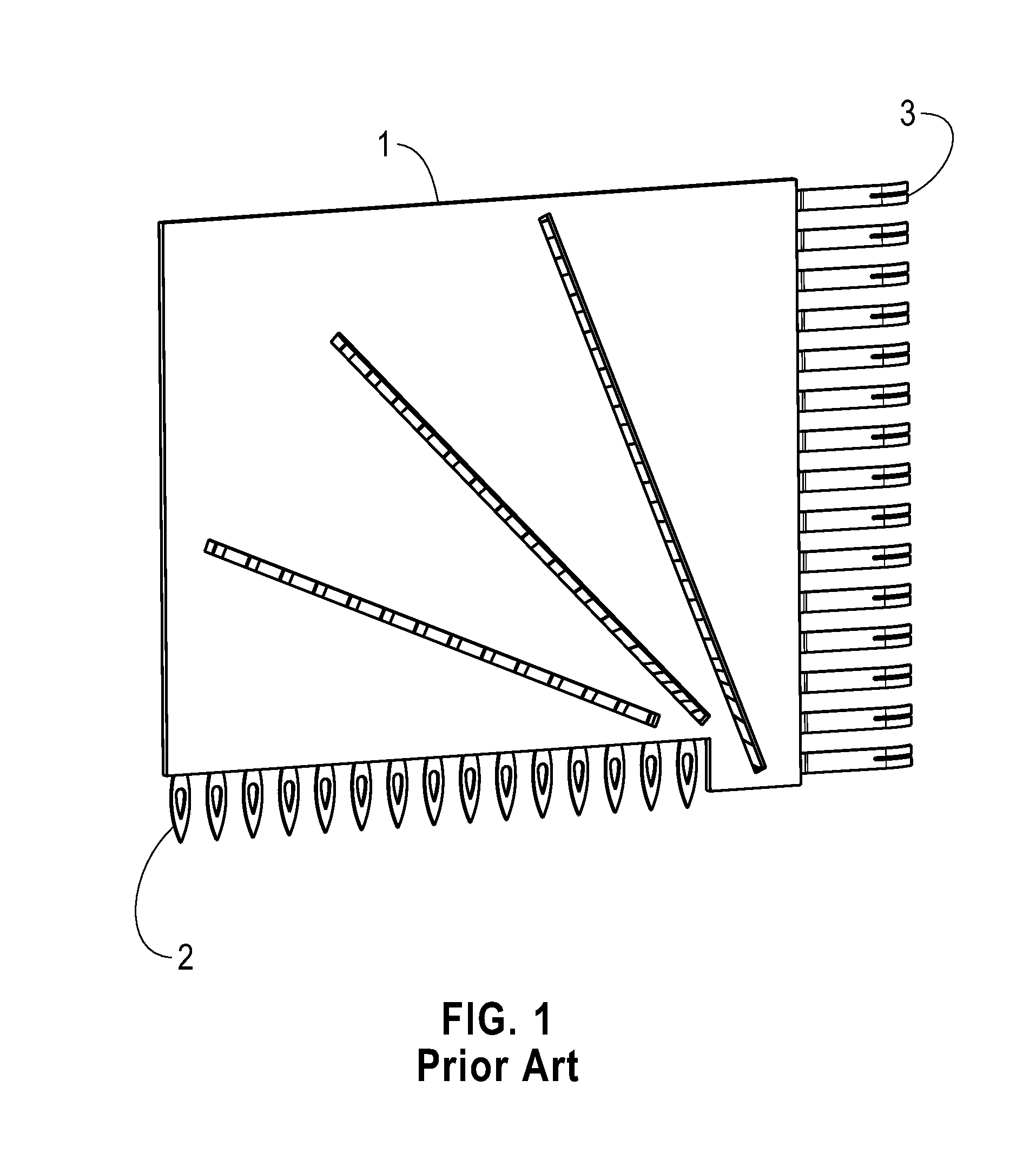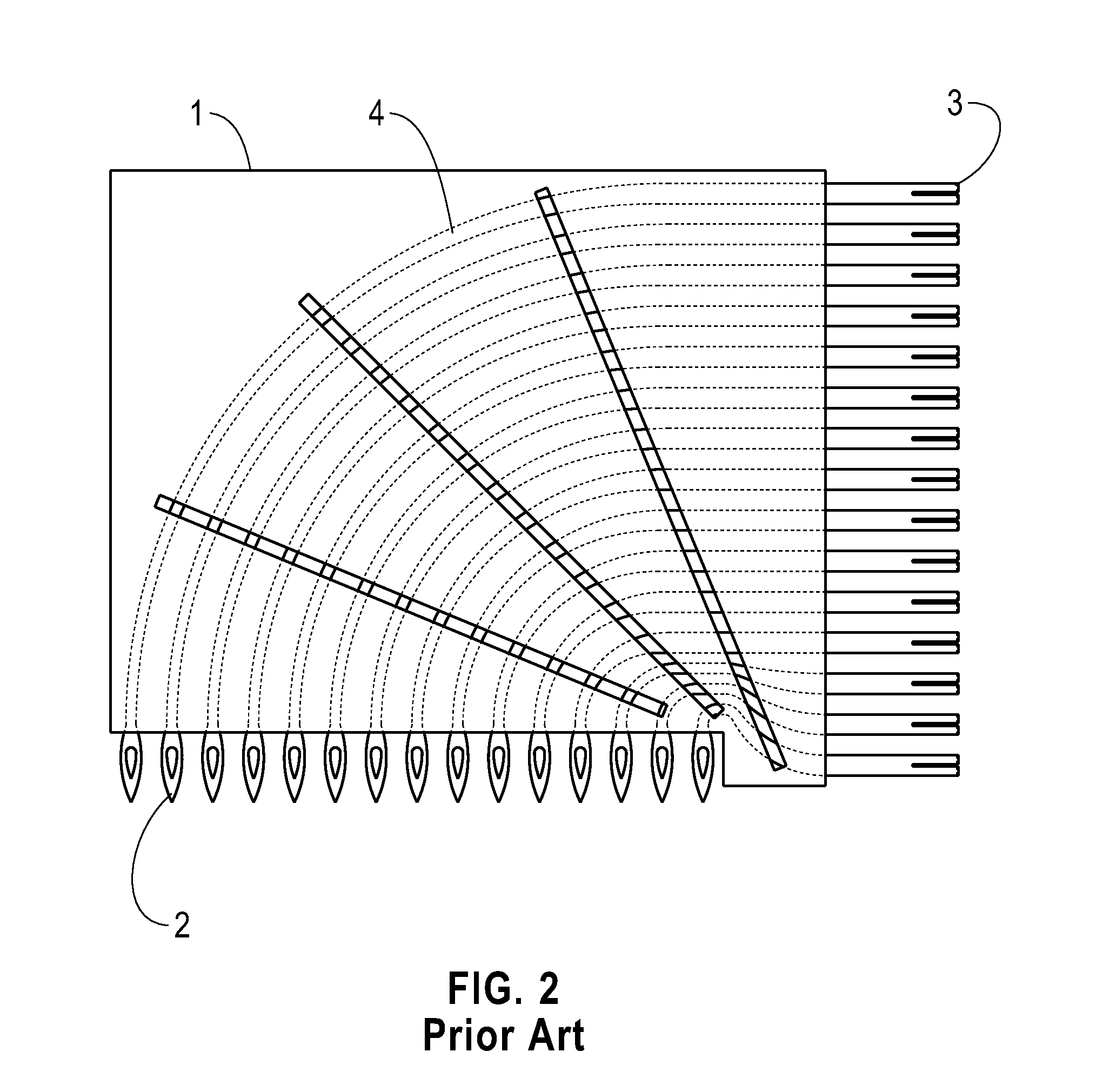Tall mezzanine connector
a connector and flexible technology, applied in the direction of electrical apparatus, coupling device connection, printed circuit, etc., can solve the problems of limiting the maximum electrical transmission distance, limiting the speed at which signals can be transmitted, and using electrical chip-to-chip signaling, etc., to reduce the length of the signal path, reduce the amount of misalignment, and reduce the amount of wire density
- Summary
- Abstract
- Description
- Claims
- Application Information
AI Technical Summary
Benefits of technology
Problems solved by technology
Method used
Image
Examples
Embodiment Construction
[0074]The preferred embodiment of the present invention will be described below with reference to the accompanying drawings.
[0075]The tall mezzanine connector of the present invention inter alia, connects two parallel circuit boards.
[0076]More particularly, the wafer connector substrate in the preferred embodiment is a rectangular cuboid since it is a three-dimensional solid, however the wafer connector can assume the shape of any prism configuration depending upon the application to which the wafer connector is to be put.
[0077]In describing the present invention, the term “connector” as used herein encompasses a header and a receptacle. The “header” is comprised of a header-base and a plurality of pin assemblies. The “receptacle” is comprised of a receptacle bottom-base, a plurality of wafer assemblies and a top base. The expression “wafer assembly” comprises a wafer circuit card, an upper contact finger assembly and a lower contact finger assembly. Further, as used herein, “wafer ...
PUM
 Login to View More
Login to View More Abstract
Description
Claims
Application Information
 Login to View More
Login to View More - R&D
- Intellectual Property
- Life Sciences
- Materials
- Tech Scout
- Unparalleled Data Quality
- Higher Quality Content
- 60% Fewer Hallucinations
Browse by: Latest US Patents, China's latest patents, Technical Efficacy Thesaurus, Application Domain, Technology Topic, Popular Technical Reports.
© 2025 PatSnap. All rights reserved.Legal|Privacy policy|Modern Slavery Act Transparency Statement|Sitemap|About US| Contact US: help@patsnap.com



